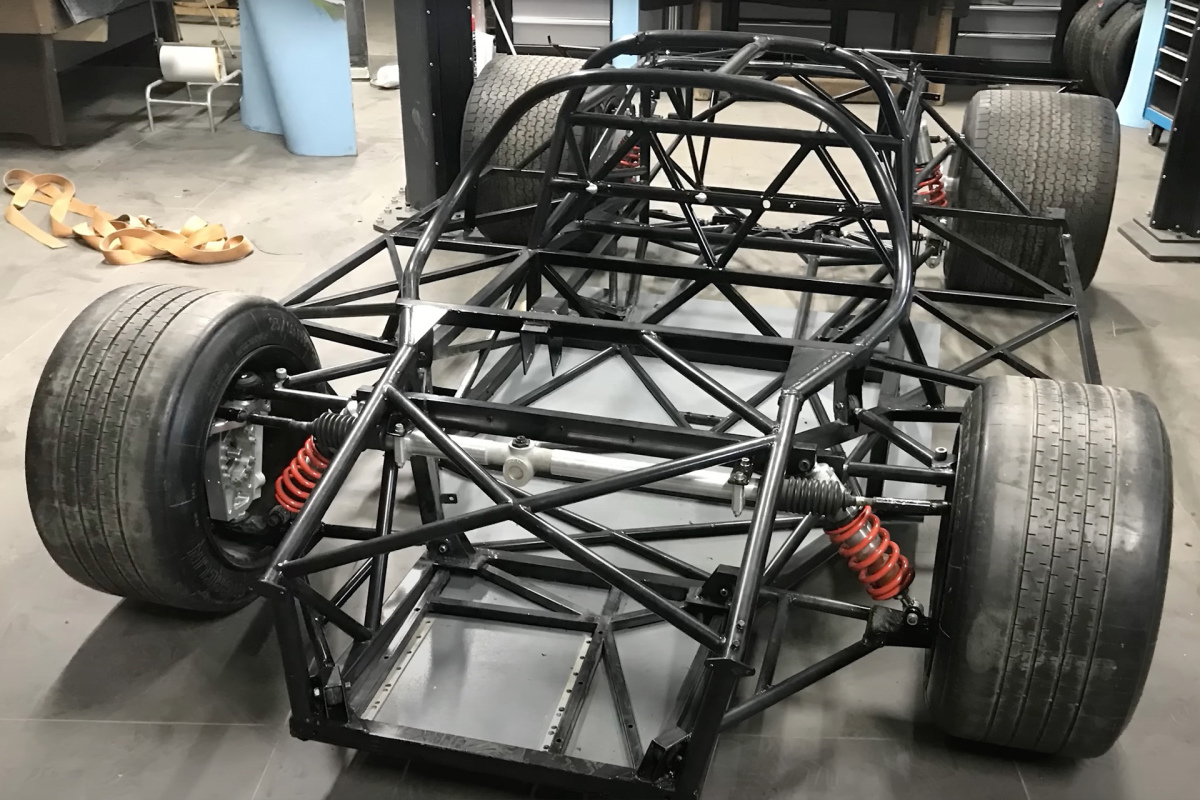Almost 55 years ago, on March 12, 1969, the legendary Porsche 917 made its debut at the Geneva Motor Show. Hans Mezger, the father of Porsche’s flat-six boxer engine, was not only responsible for the 917’s flat-12 engine, but as lead engineer oversaw the new race car’s entire development.
Due to a lack of downforce, the 917 initially proved to be unstable at high speeds, but with the help of John Wyer of J.W. Automotive – whose powder blue and tangerine orange GT40 Fords dominated Le Mans in 1968 and ’69 – the 917K (Kurzheck or ‘Short Tail’) version refined the design.
At the recent F.A.T. International Ice Race in Austria, I got to shoot a very special homage to the Le Mans-winning Gulf Oil Porsche 917K. The car’s creator, Knut Markegård from Norway, calls it the 917CFK, where ‘CF’ stands for carbon fiber.


Kurt’s 917CFK project began in 2013, the same year several Norwegian car and bike clubs successfully lobbied the government on legislation that made it possible to register homebuilt vehicles and kit cars for road use. There were caveats of course. Projects needed to pass a road and safety inspection when finished, and had to have been built to standards that included a maximum power-to-weight ratio.
For Kurt, that meant running a 917-spec flat-12 engine – which could deliver more than 1,000hp – wasn’t going to be an option. The solution? A twin-turbo Porsche flat-six.

It’s a unique air-cooled 3.6L unit with a short stroke (making it a 3.3L) built up with parts from the 911 SC to the newer 996 Turbo. While the engine itself is luftgekühlt, it does use water-to-air intercoolers to keep intake charge temps in check. The intake itself is a complete replica of what was used on the 917/10, which came after the 917K.


The engine was built by Ninemeister, the same UK-based specialists that created a few of the first power plants for Singer restomods. For road use it’s restricted to 300hp, but with some adjustments it can produce over 400hp and 600Nm of torque. Knut says that this engine is not made for peak power, but rather low-end torque. Of course, it also needed to meet the Norwegian regulations for road use.
Engine output is sent through a robust Getrag G50 transaxle, which sits behind the engine and is flipped upside down in order for the car to go forward. For it to work and actually shift gears, Knut had to extend the shift rod linkage by an additional three feet.

The 917CFK’s tube frame chassis was constructed using the 917K’s original blueprints, but thicker steel was used to increase rigidity. The molds for its custom carbon fiber body parts were sourced from three different vehicles, and as it sits now features a narrow ‘Salzburg’ front, a wide 1970 Gulf 917K rear section, and doors from another variant.
Knut joked to me, that for a perfectionist it’s a bit hard to replicate a ‘917’ since the race car had at least 11 revisions throughout the years. For his own vision, Kurt based most of his decisions on which parts would help him achieve road legal status.

Given the short tail rear, which was designed to accommodate 17-inch-wide tires, a reasonable question to ask would be who even makes studded winter rally rubber in that size? This is actually Kurt’s own work – he built dual rims that take a double set of studded Pirelli Sottozero rally tires on each side.

A twin-turbo 917 replica in the snow sounds like the recipe for a whole lot of fun, and Knut says it’s a fantastic drift car: “As you are sitting over the front axle, you have all the feedback you need down your spine. The only issue is the turning radius. If you screw up and get to full lock, you are doomed.”


Kurt paid special attention to the interior fit out, making it as close to original as possible. The seating position with the pedal box right there in the nose, all of the gauges and steering wheel – a Momo Prototipo in this case – are positioned exactly as shown in the 917K’s original technical drawings.

Some of the gauges have different functions in this car, but they still look authentic. Switches for the newly added climate control air conditioning and electric door mirrors are hidden in the door frame.


It started off as an ambitious idea, but a decade on Knut’s 917CFK is very much a reality – a road legal one at that. Even better, he’s ready to show it to everyone, even in the Austrian Alps over winter!
Vladimir Ljadov
Instagram: wheelsbywovka
[email protected]
www.wheelsbywovka.com









